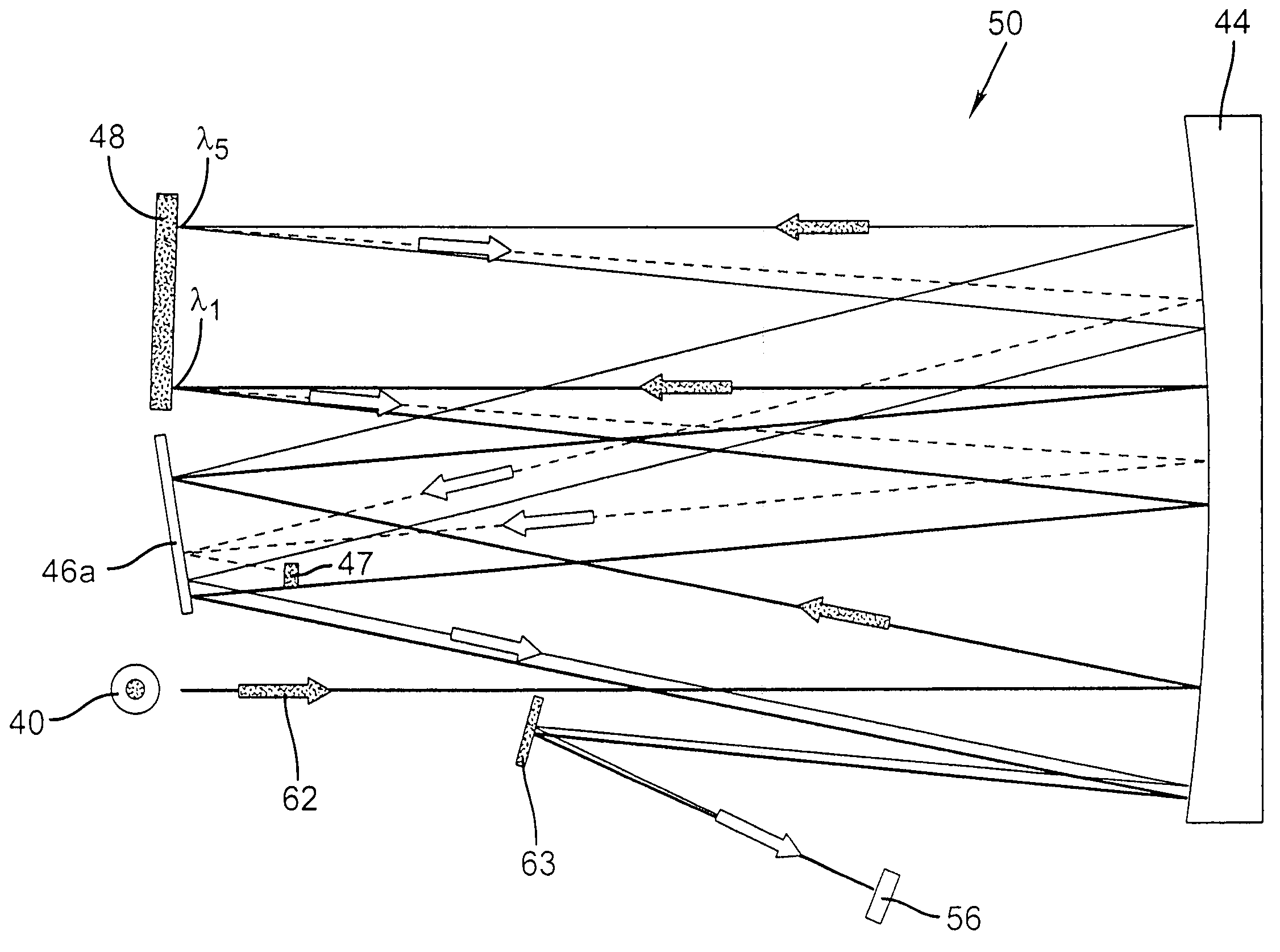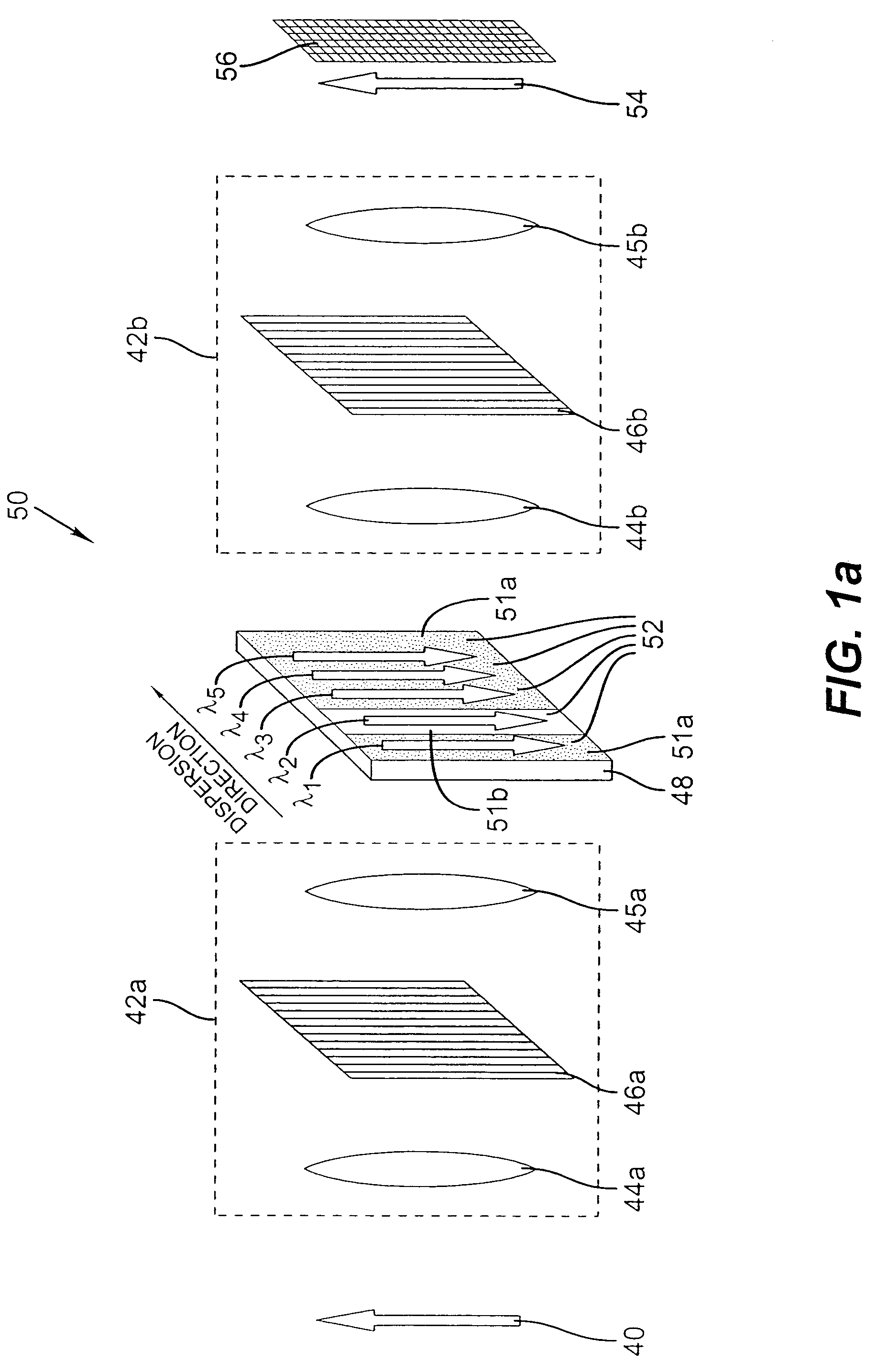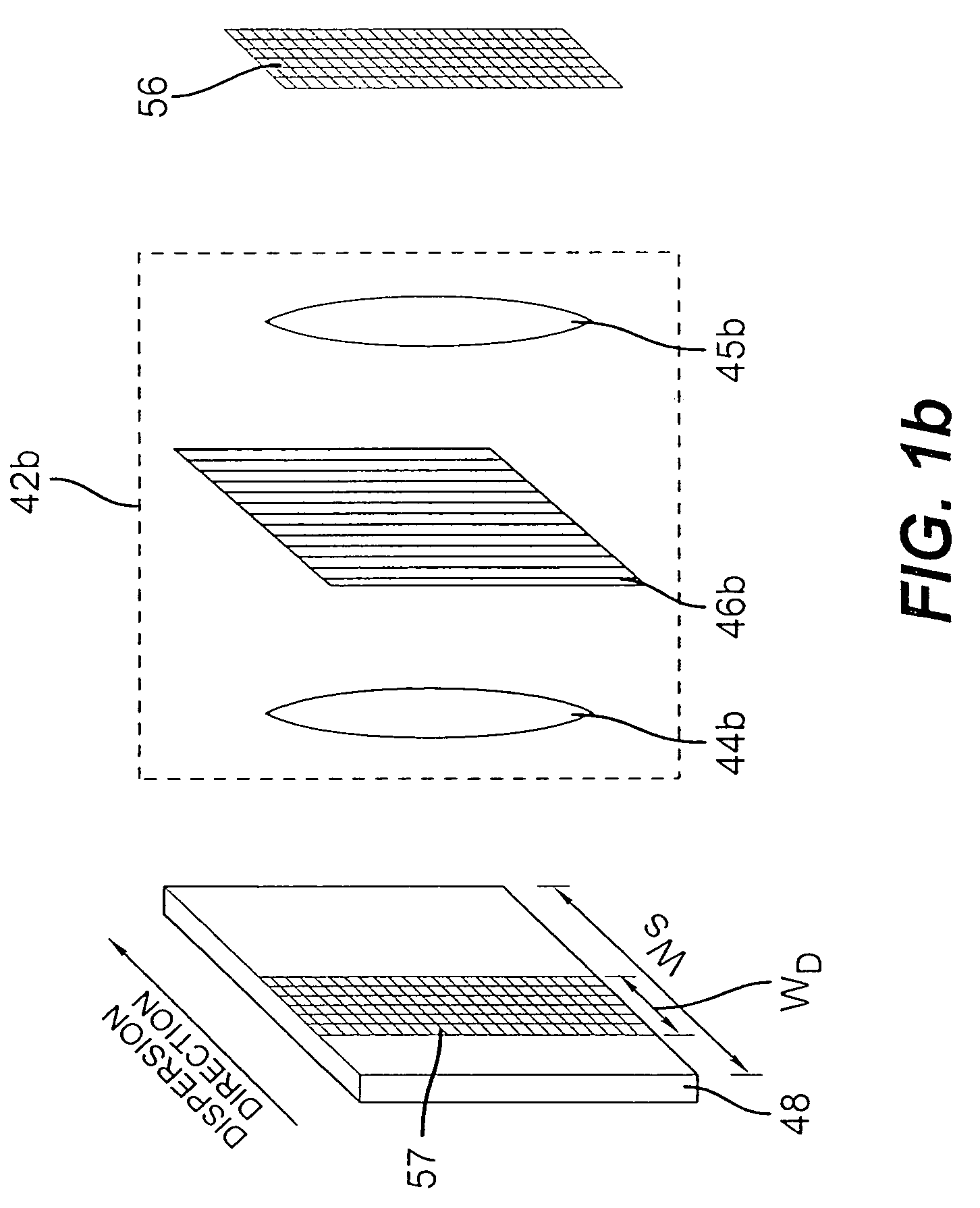Programmable spectral imaging system
a spectral imaging and spectral data technology, applied in the field of spectral imaging systems, can solve the problems of low spatial resolution, long integration time, and large hyper-spectral data sets
- Summary
- Abstract
- Description
- Claims
- Application Information
AI Technical Summary
Benefits of technology
Problems solved by technology
Method used
Image
Examples
Embodiment Construction
[0033]FIGS. 1a, 1b and l c illustrate the basic principles of the programmable spectral imaging system 50, shown here in a transmissive configuration. A dispersive imaging subsystem 42a reimages the spectral components of an input multi-wavelength image 40, producing spectrally-dispersed images 52 in an intermediate image plane. In FIG. 1a, five distinct spectrally-dispersed images 52 are shown with wavelengths λ1, λ2, λ3, λ4 and λ5. More typically, a continuous distribution of spectrally-dispersed images 52 would be formed. The intermediate image plane contains a spatial light modulator 48 that is controlled electronically to pass desired spectral components through the system and block undesired ones. Unblocked spectral components are reimaged by a de-dispersive imaging subsystem 42b, providing a spectrally-filtered output image 54 on the detector array 56. In FIG. 1a, shaded regions on the spatial light modulator 48 indicate a blocking operating state 51a that prevents unwanted s...
PUM
 Login to View More
Login to View More Abstract
Description
Claims
Application Information
 Login to View More
Login to View More - R&D
- Intellectual Property
- Life Sciences
- Materials
- Tech Scout
- Unparalleled Data Quality
- Higher Quality Content
- 60% Fewer Hallucinations
Browse by: Latest US Patents, China's latest patents, Technical Efficacy Thesaurus, Application Domain, Technology Topic, Popular Technical Reports.
© 2025 PatSnap. All rights reserved.Legal|Privacy policy|Modern Slavery Act Transparency Statement|Sitemap|About US| Contact US: help@patsnap.com



